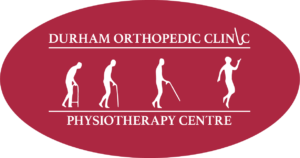The term headache refers to pain in any part of the head. Headache pain can be described as being a sharp pain, a dull ache or feeling like a throbbing sensation.
Headaches can occur on one or both sides of the head, they can radiate into the temples and can also cause pain and tightness in the neck or across the shoulders.
Headaches can present differently from person to person and tend to be complicated. Different kinds of headaches have their own set of symptoms and causes and therefore require different treatments.
There are more than 150 types of headaches but they can be divided into two main categories, primary and secondary.
Primary Headaches
Primary headaches are not caused by any other medical condition and have their own diagnosis. The majority of headaches are primary headaches.
Secondary Headaches
Secondary headaches are caused by another medical issue such as trauma, infection or disease.
It is important for the healthcare practitioner who is treating your headache to determine if the headache is a primary or a secondary headache. Effective treatment is dependent on proper diagnosis. If you are suffering from a secondary headache, successful treatment is dependent on treating the underlying condition causing it.
Common Types of Headaches
Tension Headaches
Tension headaches are by far the most common type of headache. The pain is often described as dull and achy with a sensation of tightness or pressure across the forehead or on the sides or back of the head. Typically symptoms are felt on both sides of the head. Alcohol, menstruating, stress, lack of sleep or not eating can cause tension headaches.
Sinus Headaches
A sinus headache is caused by a sinus infection in the sinus cavities behind the nose, cheekbones or forehead. Having a cold or allergies increases the risk of developing a sinus infection. This is because the increased mucous that builds up increases the risk of bacteria multiplying and causing an infection.
Sinus headache pain results in a dull headache behind the eyes, forehead, cheekbones or bridge of the nose, depending on which sinuses are affected.
Cluster Headaches
Cluster headaches are very painful and are less common than a sinus or tension headache. Cluster headaches occur in cyclical clusters which can last several weeks before they subside and a pain free remission period occurs after which can last up to a year.
Cluster headaches tend to occur at the same time each year, most often spring or fall.
The cause of cluster headaches are unknown.
Symptoms include intense pain around the eyes, accompanied by redness, swelling or a dropping of the eye on the affected side.
Cervicogenic Headaches
Cervicogenic headaches are a secondary headache caused by a disorder in the neck or upper back area. The disorder is either in the spine, discs or soft tissues of the neck.
Usually the pain is accompanied by a decrease in the range of motion in the neck and the pain is aggravated by movement.
Pain typically radiates up one side of the neck or in the back of the head up to the top of the head, occasionally radiating behind the eyes. Pain can sometimes be felt in the jaw.
Migraines
A migraine is a neurological disease that can cause severe throbbing pain that can leave you bedridden for days. Movement, light and sound can aggravate the migraine symptoms. Other symptoms seen with migraines may include:
· Seeing bright flashing dots or lights
· Blind spots in your vision
· Numb or tingling skin
· Speech changes
· Tinnitus (ringing in ears)
· Temporary loss of vision
· Seeing wavy or jagged lines
If you are suffering from headaches and would like to have a medical professional assess and treat your headaches, call our clinic and book an appointment with one of our physiotherapists at 905-428-7800.


